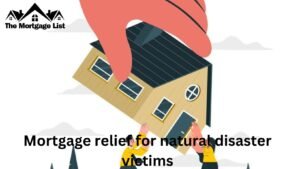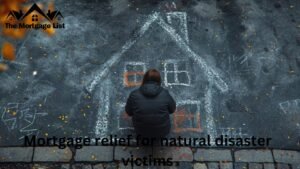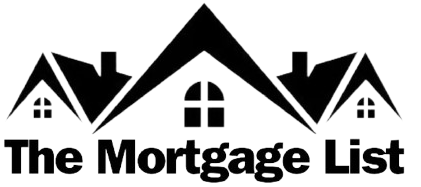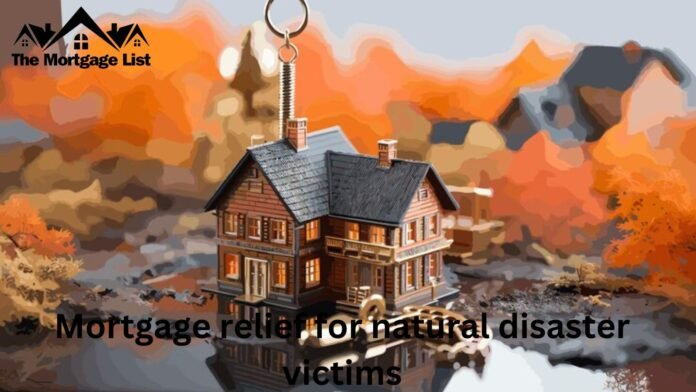Mortgage Relief for Natural Disaster Victims
Natural disasters strike unexpectedly, leaving devastation in their wake. For homeowners, the aftermath can be especially daunting as they grapple with damage to their property and the financial burden of mortgage payments. This is where mortgage relief steps in, offering a lifeline to those affected. But what exactly is mortgage relief, and how can it help you if you’ve been hit by a natural disaster? Let’s dive in.
Understanding Mortgage Relief
Definition and Purpose
Mortgage relief refers to various assistance programs designed to help homeowners manage their mortgage payments during times of financial hardship. The goal is to provide temporary or permanent solutions that alleviate the pressure of monthly payments, allowing homeowners to recover financially.
Different Types of Mortgage Relief Options
Mortgage relief can take several forms, including forbearance, loan modification, refinancing, and government assistance programs. Each option offers unique benefits tailored to different situations.
Natural Disasters and Their Impact on Homeowners
Common Types of Natural Disasters
Natural disasters come in many forms, including hurricanes, earthquakes, floods, wildfires, and tornadoes. Each disaster brings its own set of challenges, but the common denominator is the extensive damage they cause to homes and infrastructure.
How Natural Disasters Affect Homeowners Financially
The financial impact of natural disasters on homeowners is profound. Apart from the immediate costs of repairs and temporary relocation, there are ongoing expenses like mortgage payments that can become unmanageable without relief.

Eligibility for Mortgage Relief
Criteria for Qualifying
To qualify for mortgage relief, homeowners typically need to demonstrate that they’ve been directly affected by a natural disaster. This often involves providing evidence of damage and proving financial hardship.
Documentation Needed
Documentation is crucial for securing mortgage relief. Homeowners must gather proof of the disaster (like insurance claims and photos), financial statements, and any correspondence with their lender.
Types of Mortgage Relief for Natural Disaster Victims
Forbearance
Forbearance allows homeowners to temporarily reduce or pause their mortgage payments. This option provides immediate relief, giving them time to recover without the threat of foreclosure.
Loan Modification
Loan modification involves altering the terms of the mortgage to make payments more affordable. This might include extending the loan term, reducing the interest rate, or changing the loan type.
Refinancing
Refinancing replaces the current mortgage with a new one, ideally with better terms. This can lower monthly payments and interest rates, easing the financial burden.
Government Assistance Programs
Various federal and state programs are available to assist homeowners affected by natural disasters. These programs offer grants, low-interest loans, and other forms of financial aid.
Forbearance Programs
What is Forbearance?
Forbearance is a temporary halt or reduction of mortgage payments. It’s not a forgiveness of debt but rather a deferment that allows homeowners time to stabilize their finances.
Pros and Cons of Forbearance
Pros:
- Immediate relief from payments
- Prevents foreclosure
- Allows time for financial recovery
Cons:
- Accrued interest during the forbearance period
- Larger payments once forbearance ends
- Potential impact on credit score
How to Apply for Forbearance
To apply for forbearance, contact your mortgage servicer, explain your situation, and provide the necessary documentation. It’s crucial to understand the terms and what will happen after the forbearance period ends.

Loan Modification Programs
What is Loan Modification?
Loan modification permanently changes the terms of your loan. This can include lowering the interest rate, extending the loan term, or switching to a different loan type.
Pros and Cons of Loan Modification
Pros:
- Long-term reduction in payments
- Prevents foreclosure
- May improve financial stability
Cons:
- Lengthy application process
- Possible impact on credit score
- May not significantly reduce payments
How to Apply for Loan Modification
Start by contacting your lender to discuss your options. You’ll need to submit an application, along with financial documents that demonstrate your need for modification.
Refinancing Options
What is Refinancing?
Refinancing involves replacing your existing mortgage with a new one, ideally with better terms such as a lower interest rate or a longer repayment period.
Pros and Cons of Refinancing
Pros:
- Potentially lower monthly payments
- Better interest rates
- Can provide cash-out options for repairs
Cons:
- Closing costs and fees
- Long approval process
- Possible requirement of a higher credit score
How to Refinance Your Mortgage
To refinance, shop around for the best rates and terms, then apply with a lender. Be prepared to provide extensive documentation and undergo a credit check.
Government Assistance Programs
Federal Programs
Federal programs like FEMA’s Disaster Relief Fund and the Department of Housing and Urban Development (HUD) offer various forms of aid, including grants and low-interest loans.
State Programs
Many states have their own disaster relief programs that provide financial assistance to homeowners. These programs vary by state and may include grants, loans, and tax relief.
How to Access These Programs
To access these programs, start by visiting the relevant government websites, gather the necessary documentation, and submit your application as soon as possible.
Steps to Take After a Natural Disaster
Contacting Your Lender
The first step after a disaster is to contact your mortgage lender. Inform them of your situation and inquire about available relief options.
Assessing the Damage
Document the damage thoroughly. Take photos, make lists, and keep all receipts related to repairs and temporary living expenses.
Applying for Relief
Submit applications for mortgage relief programs promptly. Ensure you provide all required documentation to avoid delays.
Financial Planning Post-Disaster
Budgeting for Repairs
Create a detailed budget that prioritizes necessary repairs. Consider getting quotes from multiple contractors to find the best rates.
Prioritizing Expenses
Focus on essential expenses first, like mortgage payments, insurance, and necessary repairs. Cut back on non-essential spending until you stabilize financially.
Seeking Financial Advice
Consult with a financial advisor to create a long-term recovery plan. They can help you navigate insurance claims, manage debt, and invest in repairs wisely.
Case Studies
Real-Life Examples of Mortgage Relief in Action
Consider the case of Jane Doe, who utilized a forbearance program after a hurricane damaged her home. The relief allowed her to pause payments for six months, during which she managed to rebuild her finances.
Lessons Learned
From these examples, it’s clear that acting swiftly and being prepared with documentation can significantly ease the process of obtaining mortgage relief.
Challenges and Solutions
Common Obstacles in Obtaining Relief
Common challenges include lengthy application processes, lack of documentation, and misunderstandings about program requirements.
How to Overcome These Challenges
Stay organized, keep thorough records, and communicate clearly with your lender. Don’t hesitate to seek help from financial advisors or legal experts.

Tips for a Smooth Application Process
Gathering Documentation
Compile all necessary documents early. This includes proof of income, evidence of disaster impact, and financial statements.
Communicating with Lenders
Maintain open and honest communication with your lender. Keep them informed about your situation and ask questions if you’re unclear about any part of the process.
Following Up on Applications
Regularly check the status of your applications and follow up promptly if there are any delays or requests for additional information.
Conclusion
Natural disasters can upend your life, but mortgage relief offers a vital safety net. By understanding your options and acting swiftly, you can alleviate some of the financial burden and focus on rebuilding. Don’t hesitate to reach out for help and use the available resources to navigate this challenging time.
FAQs
What Should I Do Immediately After a Natural Disaster?
First, ensure your safety and that of your family. Then, contact your mortgage lender to discuss relief options and document any damage for insurance claims.
How Long Does It Take to Receive Mortgage Relief?
The timeline can vary depending on the type of relief and the responsiveness of your lender. It can take anywhere from a few weeks to several months.
Can I Apply for Multiple Relief Programs?
Yes, you can apply for multiple programs. Just ensure that you meet the eligibility criteria for each and provide all required documentation.
What If My Application Is Denied?
If your application is denied, ask for the specific reasons and see if you can address them. Consider applying for other relief programs or seeking legal advice.
How Can I Prepare for Future Disasters?
Create an emergency fund, keep important documents safe, invest in proper insurance, and stay informed about the disaster relief options available to you.
Read More:>

